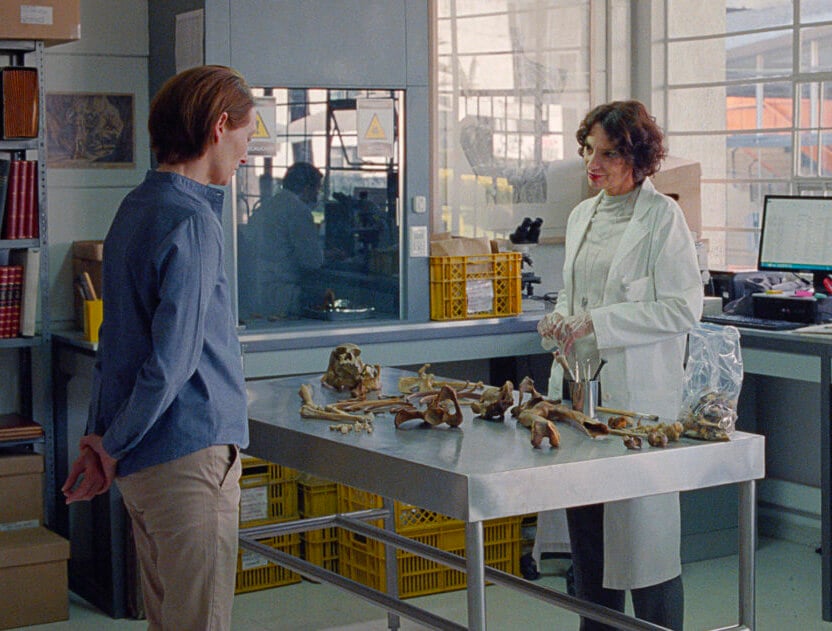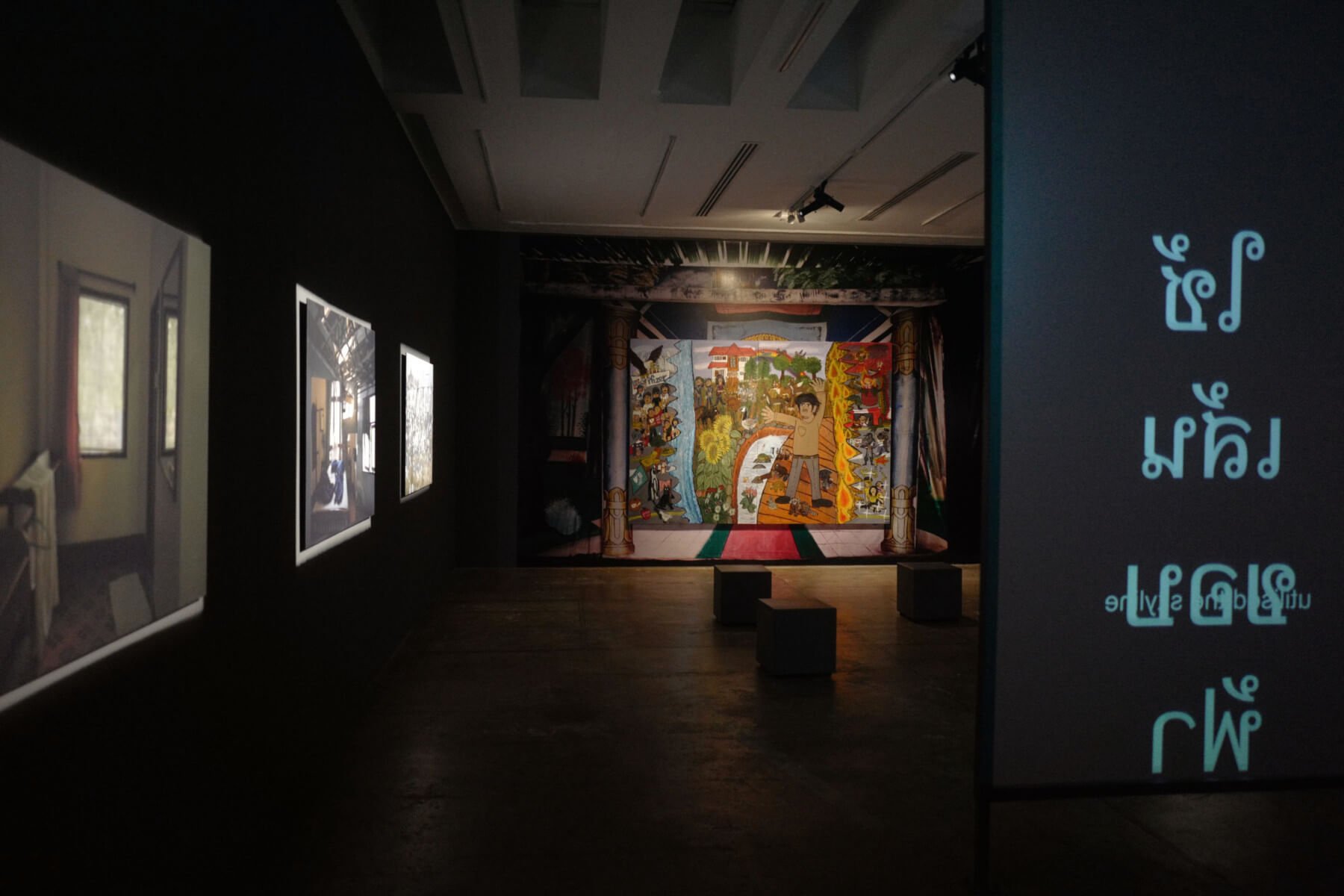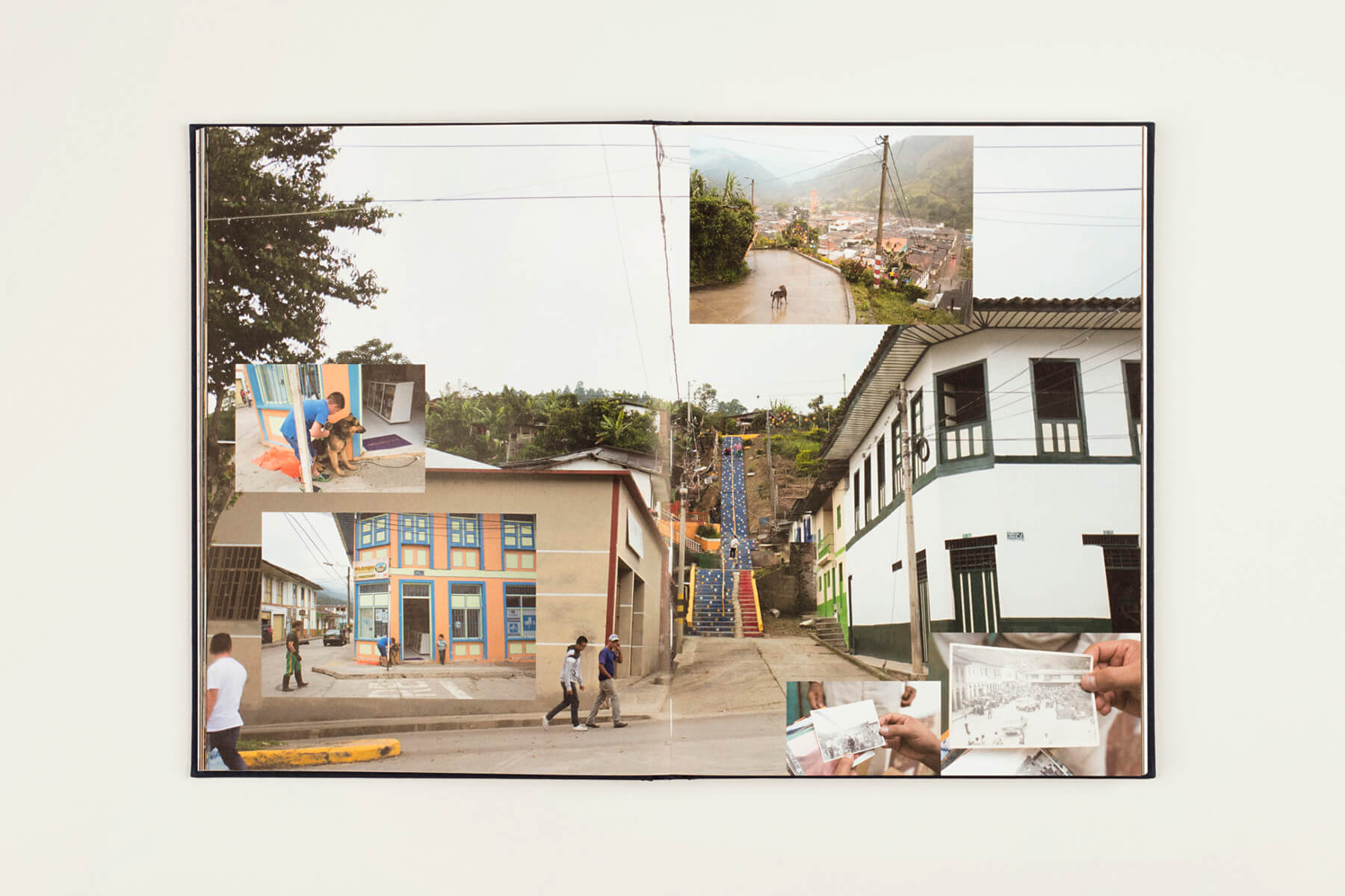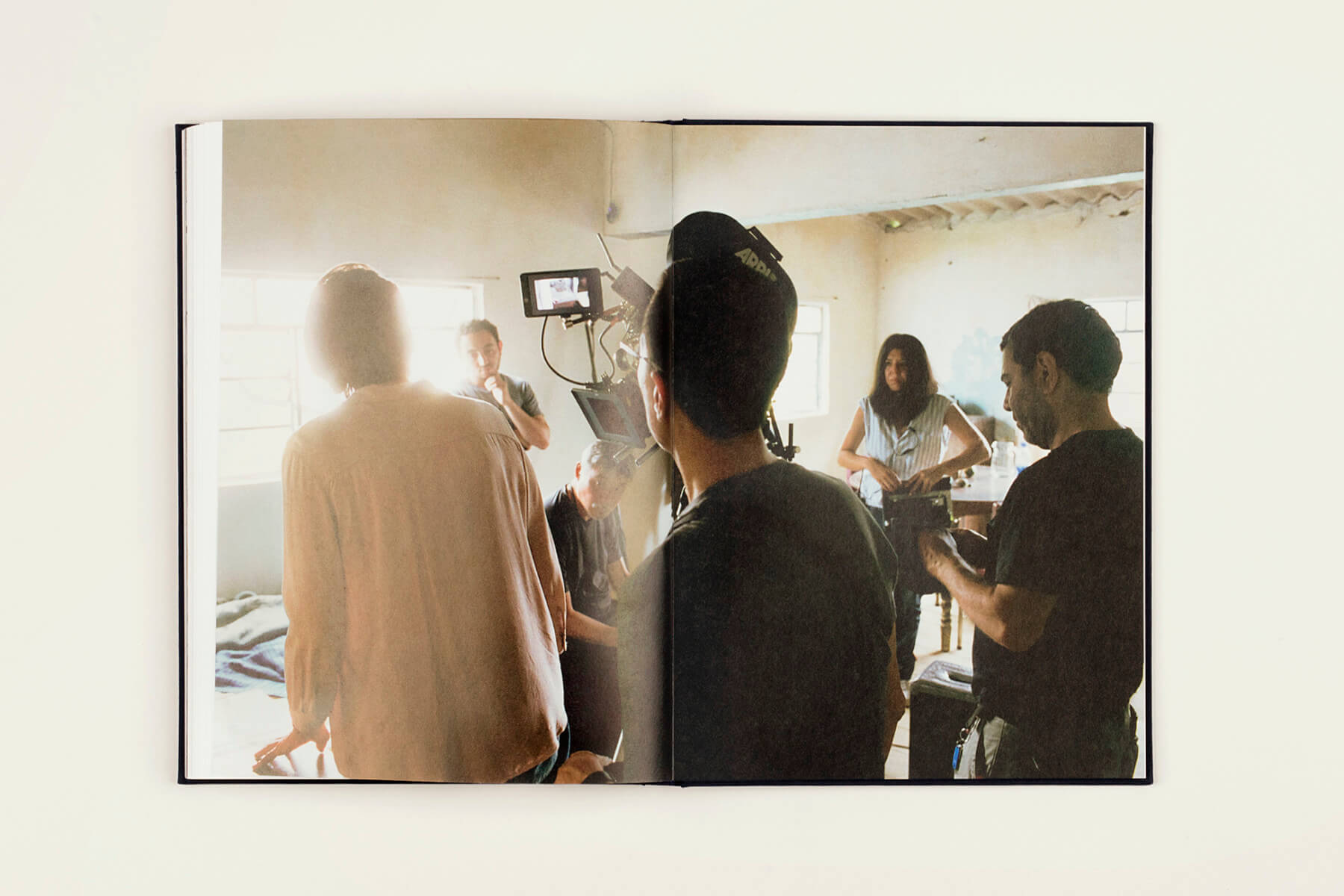Apichatpong the Memorious

The Thai filmmaker Apichatpong Weerasethakul encourages audiences to sleep during his films. “Entering a movie theatre is not unlike entering a dream,” he said in one interview. “Films hypnotize us and take us to new worlds. Sleeping and films are like twin realities.” Directors like Abbas Kiarostami and Tsai Ming-liang have also spoken of luring viewers into an easy repose and of their belief in the restorative function of dreams. Yet even among this crowd, Weerasethakul stands out. Whether in their attention to queer romances in the countryside, Buddhist monks and country doctors, or were-tigers and ghost monkeys, his films create a porousness between fact and fiction, dreams and waking states, so subtle as to make the passage back and forth as easy as stepping over a low threshold.
Depictions of sleep recur throughout Weerasethakul’s films, which are largely set around his hometown of Khon Khaen in the rural northeast of Thailand. His first fiction feature, Blissfully Yours (2002), ends with a somnolent afternoon sequence in which its three main characters lie down to nap near a burbling creek. In Cemetery of Splendour (2015), a platoon of soldiers is afflicted with a sleeping sickness. Tended to in a makeshift hospital, they periodically wake and wander about the town, only to doze off abruptly in the middle of a meal or, tellingly, in a movie theater, to be carried back in cradled arms. For most of the film, however, they lie in their hospital beds, slumbering under the shifting neon lights of “dream machines” that dispel nightmares. Watching the soldiers sleep, the viewer feels like one of Weerasethakul’s patients, too, recuperating under his careful watch. In 2018, as part of the International Film Festival Rotterdam, Weerasethakul set up the installation SLEEPCINEMAHOTEL, in which viewers could rent a bed for a night and sleep alongside a curation of projected images.
A growing sense of unease has long been rippling under the tranquil surface of Weerasethakul’s films.
Something is clearly, amiss, then, from the outset of his latest film, Memoria (2021), his first venture outside of Thailand. In the opening scene, a woman wakes up in a curtained room, startled by a strange sound. This is the last time that we will see the protagonist, Jessica Holland (Tilda Swinton) asleep, in a film characterized more by fitful insomnia than repose. Based partly on Weerasethakul’s own experience with Exploding Head Syndrome—a condition in which a “bang” reverberates irregularly inside the skull—the sound takes on a life of its own as Jessica searches for its source.
A growing sense of unease has long been rippling under the tranquil surface of Weerasethakul’s films. By stripping Memoria of the dreamlike environment that audiences have come to expect from his Thailand, he is able to revisit his abiding themes—and finally make them audible.

Weerasethakul was born in 1970, to Sino-Thai doctors who had moved from Bangkok to Isan, a northeastern region with its own dialect and a complicated history. Primarily Laotian-speaking, it was annexed by the Kingdom of Siam in the nineteenth century and subject to decades of Thaification policies. (When Weerasethakul’s films play in Thailand, they are often accompanied by subtitles so that the audience can understand the local dialect.) Three years after he was born, student protesters ushered in Thailand’s first democratic government, which lasted till 1976, when a violent crackdown at Thammasat University reinstated the military junta. Many protesters fled into the maquis surrounding Isan, joining a communist insurgency, which brought fierce repression to the area until a general amnesty was offered in the 1980s, drawing thousands of guerrillas out from the jungle. In the ensuing decades of strongman capitalism, the region came to be seen as a liability—communist-sympathizing, un-Thai, “backward”—for Thailand’s entry into the global economy, represented by the metropolis of Bangkok.
After studying architecture at Khon Khaen University, Weerasethakul enrolled in the 1990s in a film degree at the School of the Art Institute of Chicago, where he was exposed to American video artists like Bruce Baille, Maya Deren, and Andy Warhol, alongside international arthouse filmmakers like Kiarostami. Few contemporary filmmakers have assimilated these traditions as productively as Weerasethakul, whose oeuvre is equally marked by formal and narrative experimentation. As influential is his childhood immersion in Thai genre movies and folk tales, reflected in an affection for low-budget special effects and attention to the natural world.
In 2000, Weerasethakul released his first film, the hybrid documentary Mysterious Object at Noon. Based on the model of the Surrealist “exquisite corpse,” it follows the crew as they travel from the north to the south of Thailand, asking an array of people—a village theater troupe, elephant herders, street vendors, schoolchildren—to string together a composite story about a young boy and his schoolteacher. As the tale grows increasingly fantastical, Weerasethakul cleverly blends its narrative with the real lives of his interlocutors, as well as the radio and TV dramas that are heard blaring throughout the country. In what will become a trademark, fictional and nonfictional elements are granted equal status, with seamless transitions from one to the other. When the crew breaks for lunch, Weerasethakul captures it on camera, before re-suspending disbelief.
His next film, Blissfully Yours (2002), centers on a Burmese immigrant, Min, and the two Thai women who take care of him. As the trio venture from the city, with its stifling hospitals, offices, and factories, into the jungle, they enter into a locale of almost magical escape, making love, picking berries, and bathing in the river. Weerasethakul ruptures the previously “realistic” segments with Min’s voiceovers in Burmese and overlaid sketches from his diary. In his follow-up, Tropical Malady (2004)—to my mind, one of the best films of the twenty-first century—a forest ranger falls in love with a village boy, as the two travel through the rural Thailand, watching a movie, stopping at a concert hall, visiting a cave. Shaped like a diptych, the film’s second half sees the two actors now playing a soldier and a were-tiger, the first pursuing the second into the jungle. As night descends, the weary soldier hears monkeys talking and sees the spirit of a dead cow arise, before he is finally consumed by the tiger, their souls merging together.
By finding echoes reverberating between Thailand and Colombia, Weerasethakul tunes into a lower frequency.
While Weerasethakul’s films have always been populated by ghosts, monsters, and spirits, their presence has taken on an increasingly political cast. In Uncle Boonmee Who Can Recall His Past Lives (2010)—the surprise winner of that year’s Palme d’Or—the titular character wonders if his fatal kidney disease is tied to karmic retribution for his role in killing communists during the government crackdowns in Isan. As Boonmee is visited by the spirits of his deceased wife and son, their haunting comes to represent the unreconciled memories of violence in the region, which the Thai government has long suppressed and refused to exorcise.
In Cemetery of Splendour, we discover that the sleeping soldiers have been drafted into underworld armies, led by two kings who continue to wage war in the afterlife. The film ends with one soldier, through the form of a medium, guiding the main character, Jenjira, along the floorplan of the Laotian king’s palace, as Jenjira points to bomb shelters in the present, remnants from the U.S. incursion into Cambodia. “The start of the evil that we witness now in Thai politics is because of the American influence, that has awakened these monsters in the barracks,” Weerasethakul said in a 2017 interview. Behind the long reign of Thailand’s military is the history of American influence in the region, which has used the nation as an anti-communist bastion since the Vietnam War.
As his profile has grown, Weerasethakul has found himself in the difficult position of both representing Thailand on the world stage—he is the only Thai filmmaker to have won prizes at Cannes (not just once, but four times)—while making films that subtly criticize Thai nationalism. His first major brush with censorship came in 2006, when he received word that the censorship board of the newly installed military junta had requested four innocuous scenes—one of monks playing with a toy UFO, another of a doctor with an erection—be cut from Syndromes and a Century. Rather than submit, Weerasethakul withdrew the film from circulation in Thailand and formed a Free Thai Cinema movement to protest censorship laws. He has not exhibited a film there since. On a visit to Colombia in 2017, he decided to set his next film there.
Weerasethakul has traced his interest in Colombia to the similarity of its landscape to Thailand’s: the lush greens, dappled sunlight, and mercurial sky, which can bring sudden downpours. Yet a historical parallel quickly becomes apparent, too. Like in Isan, Colombia’s villages are marked the absence of “disappeared” people—those who vanished at the hands of both the government and guerillas—as the Cold War morphed into the War on Drugs. By finding echoes reverberating between Thailand and Colombia, Weerasethakul tunes into a lower frequency, grasping after the presence of traumas that won’t let audiences sleep blissfully for much longer.

If Weerasethakul’s previous features exuded a sensation of dreamlike intoxication, Memoria evokes the feeling of a sleepless night—an effect of the innovative sound design by Akritcharlerm Kalayanamitr. The soundscapes in earlier films like Blissfully Yours and Tropical Malady are enveloping, evoking what it’s like to be inside the jungle. In Memoria, however, each sound is more abrasive and individually defined. After that first “bang,” Jessica (and the audience) begins to hear every chair scrape, every car alarm. When a bus tire blows out on a busy pedestrian street, one passerby reflexively throws himself onto the ground before dashing off.
The recurring sound Jessica hears is strange and beautiful: at once like a rubber band snapping and a bird striking a window, or as she describes it to a sound engineer, like “a big ball of concrete that falls into a metal well which is surrounded by seawater.” (Try sleeping through that.) We know very little about Jessica, besides that she is a Scottish expatriate in Colombia, growing orchids in Medellin. She speaks some halting and rudimentary Spanish; her sister is married to a Colombian and is convalescing in a hospital. An offhand comment suggests she’s recently bereaved—she seems to wear her deceased husband’s clothing. For most of the film, however, she is strangely passionless, guided by the first disturbing, then entrancing, noise, which she hears in various places.
In her aimless, yet agitated wandering, Jessica resembles a sleepwalker. Weerasethakul has traced Memoria’s inspiration to I Walked with a Zombie, Jacques Tourneur’s subversive 1943 B-movie in which a Canadian maid finds employment for a sugar planter family on a Caribbean island, where markers of the slave trade are everywhere. As the maid takes care of the planter’s comatose, sleepwalking wife—also named “Jessica Holland”—the sound of drumbeats is ever-present, much like Jessica’s “bang.” The drums eventually lure the sleepwalker into the fields, where she confronts a zombie named Carrefour, who guards the voodoo houmfort.
Hernan’s overwhelming soundscape breaks the sound barrier of empty time.
If I Walked with a Zombie quietly indicts slavery’s beneficiaries, Memoria introduces Jessica to the horrors beneath Colombia’s surface. Midway through the film, she meets a foreign archaeologist, Agnes (Jeanne Balibar), who is assisting on the excavation of human skeletons unearthed by construction on La Linea, a tunnel through the Andes. Invited along on the next expedition, Jessica emerges from the tunnel into a different world: the Andean village of Pijao, which marks a return to the familiar, rural settings of Weerasethakul’s Thai films. “I imagine a scenario in which Jessica Holland . . . wakes up,” he writes in a beautiful accompanying book from Fireflies Press.[1]“She finds herself in Bogotá, being drawn by a dream or trauma that she doesn’t remember.”This dream or trauma is introduced in the figure of an older man (played brilliantly by Elkin Díaz, a Colombian soap opera star) whom Jessica meets as he scales fish by a village creek. The man claims to remember everything that has ever happened to him and to hear the vibrations stored in rocks, the landscape, his own body. To demonstrate, he picks up a stone and relates a story that it overhead, of a man robbed by his two friends. Like Boonmee, he can “recall his past lives,” amplifying the memories that are preserved in the environment. His name, like that of the sound engineer Jessica consults with earlier in the film, is Hernan.
At one point, Hernan lies down to sleep, and we soon realize that he’s doing so with his eyes open. As Jessica listens to the bubbling creek and looks around her, Weerasethakul cuts to a beautiful shot of Hernan’s boots, with flies buzzing overhead. When Hernan wakes, gasping for air as if coming up from underwater, it is almost as if he is being resuscitated. Later, as the two share an aguardiente in Hernan’s shack, Jessica suddenly begins to remember and recite memories—hiding under a bed, like Pijao’s villagers did during the many raids on the region—which could only be Hernan’s. (Many of the stories are drawn from Weerasethakul’s interviews with Pijao’s residents.) “I’m like a hard drive, and you, somehow, are an antenna,” Hernan tells her. As they clasp hands, the rush of an intense soundscape overwhelms them.

Memoria’s final scene will pose difficulties for many viewers. The magic of Weerasethakul’s films, however, is in their resistance to easy explanation. For him, dreams—like cinema—are not meant to be interpreted; rather, they comprise an alternate landscape with its own coherent terrain. One clue, however, can be found in a reference in Weerasethakul’s journals to Benedict Anderson, whom he befriended toward the end of the Marxist historian’s life. In Imagined Communities (1983), his influential study of nationalism, Anderson reoriented nationalism’s origin story, placing it not in Europe but in the “creole states” of South America and Southeast Asia. (Weerasethakul designed the cover of the book’s Thai edition.) He argued that the invention of the modern nation-state reconceived temporality, moving away from the “messianic time” of a contiguous past, present, and future (as in Buddhism and animism) and toward a secular, all-encompassing present—what he termed “empty” or homogenous time, borrowing a concept from Walter Benjamin.
To my ear, Hernan’s overwhelming soundscape breaks the sound barrier of empty time, unleashing an overflow of long-suppressed memories like the bursting of a dam. Following a moment of breathtaking silence—in which audiences can hear their neighbors breathing in the cinema and the HVAC humming—the crash of waves and wind comes rushing in, before a progression of sounds can be heard: first, a voice, repeating the memories of Hernan’s stone in an indigenous language; then, the sounds of Jessica’s and Hernan’s voices and an 1860 rendition of the French folk song “Au claire de la lune,” followed by the twittering of birds that Weerasethakul recorded in Thailand. In the sonic exchange between Hernan and Jessica, there lies the possibility for suppressed temporalities to finally reassert themselves.
It’s still to be seen whether Weerasethakul will make more films in Colombia, move to another location, or, one hopes, eventually return to Thailand. Memoria, though, augurs a promising new direction. “As I was making Memoria,” he recounts, “the morning ‘bang’ disappeared. With it the precious, murky, drifting realm was gone. For better or for worse, I could sleep for seven hours a night. This was another answer.”
[1] It also includes pages from Weerasethakul’s notebooks, drawings, and an illuminating set diary from the founding editor of Fireflies Press, Giovanni Camia.